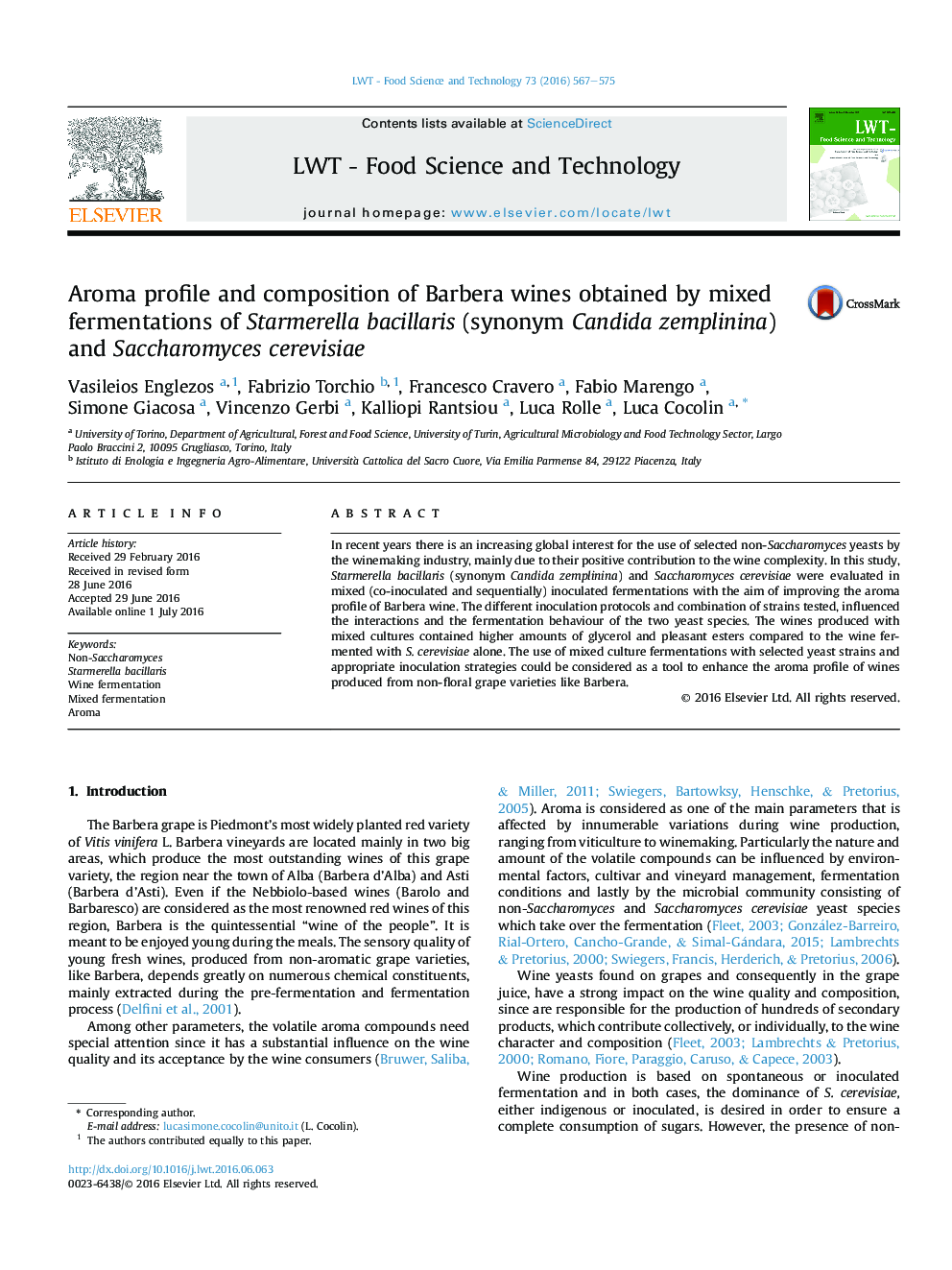| Article ID | Journal | Published Year | Pages | File Type |
|---|---|---|---|---|
| 4563397 | LWT - Food Science and Technology | 2016 | 9 Pages |
•Starmerella bacillaris and Saccharomyces cerevisiae mixtures were used to ferment Barbera grape must.•The interactions between yeast strains were studied in mixed (co-inoculated and sequentially inoculated) fermentations.•HS-SPME-GC-MS was used to identify and semi-quantify 41 different volatile compounds.•Starm. bacillaris is more effective in modulating the aroma profiles of wines from mixed fermentations.•Mixed fermentations could be considered as a tool to enhance the aroma profile of Barbera.
In recent years there is an increasing global interest for the use of selected non-Saccharomyces yeasts by the winemaking industry, mainly due to their positive contribution to the wine complexity. In this study, Starmerella bacillaris (synonym Candida zemplinina) and Saccharomyces cerevisiae were evaluated in mixed (co-inoculated and sequentially) inoculated fermentations with the aim of improving the aroma profile of Barbera wine. The different inoculation protocols and combination of strains tested, influenced the interactions and the fermentation behaviour of the two yeast species. The wines produced with mixed cultures contained higher amounts of glycerol and pleasant esters compared to the wine fermented with S. cerevisiae alone. The use of mixed culture fermentations with selected yeast strains and appropriate inoculation strategies could be considered as a tool to enhance the aroma profile of wines produced from non-floral grape varieties like Barbera.
